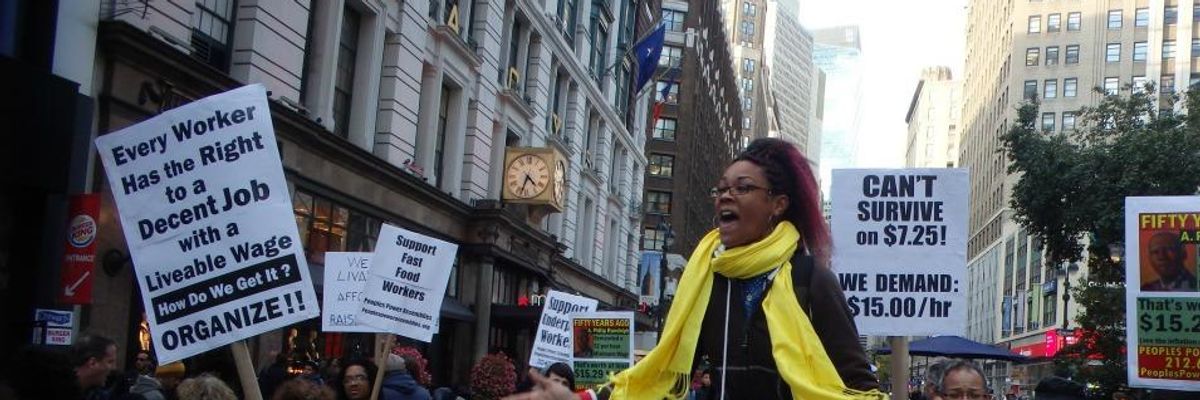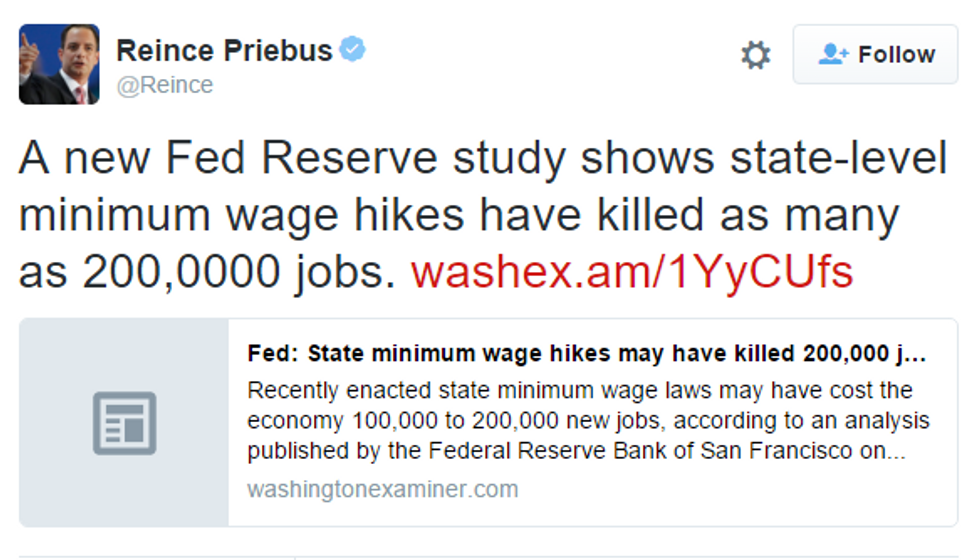When Cornell University featured it as their book of the month in November of 2014, they called it "the most comprehensive analytical, and unbiased assessment of the effects of minimum wage increases that has ever been produced."
Belman and Wolfson provide both a literature review and a more rigorous "meta-analysis" (a technique which combines thousands of results from hundreds of studies) of the research on the minimum wage's effects on earnings, employment, labor force participation, school enrollment, inequality, and poverty. Their core finding is that moderate:
...increases in the minimum wage raise the hourly wage and earnings of workers in the lower part of the wage distribution and have very modest or no effects on employment, hours, and other labor market outcomes. The minimum wage can then, as originally intended, be used to improve the conditions of those working in the least remunerative sectors of the labor market. While not a full solution to the issues of low-wage work, it is a useful instrument of policy that has low social costs and clear benefits.
Neumark does not even mention this work, choosing instead to focus on his own lit review (with Wascher). However, as economist John Schmitt points out:
The Neumark and Wascher review, however, is considerably more subjective and arguably less relevant to the United States than the two meta-studies discussed earlier. Only 52 of the 102 studies reviewed by Neumark and Wascher analyzed U.S. data. Of these, Neumark and Wascher designated 19 as "most credible," five of which were their own studies.
It's inconceivable that Neumark is unaware of Belman/Wolfson, so really, ignoring their exhaustive review of this question of the minimum wage and job loss is more of a fist on the scale than a thumb. To be clear, there are quality studies reviewed by Belman/Wolfson that find job loss estimates of the magnitude Neumark uses here. But they exist alongside equally refined analyses that find zero impact on jobs. A balanced review can't ignore the latter.
One more point, and it's one that Neumark, to his credit, makes himself. Re his 200,000 estimate, he writes: "This is a small drop in aggregate employment that should be weighed against increased earnings for still-employed workers because of higher minimum wages." It's very important in this research to talk about both sides on the impact: costs (job or hours losses) and benefits (higher hourly pay). Even if Neumark is right about elasticities of -0.1 or -0.2, the fact that those numbers are so much less than -1 implies many more beneficiaries of the increases than those hurt by it.


